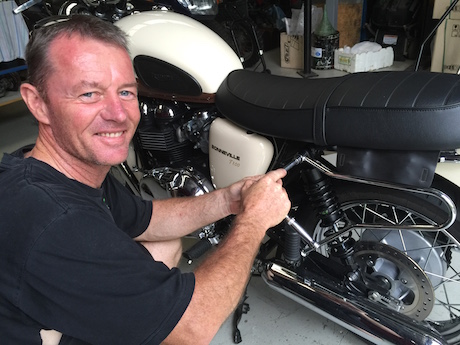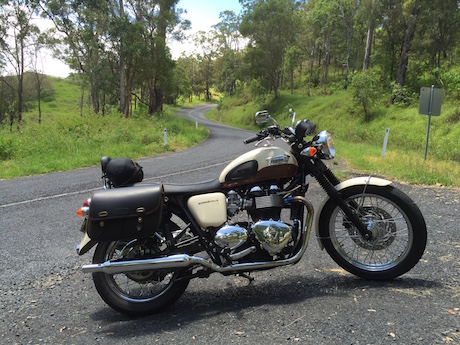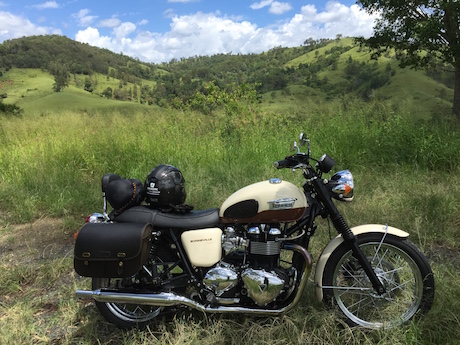My Triumph Bonneville T100 is a fun little bike but I don’t pretend it’s a great performer, especially two-up.
The standard suspension is very standard! It’s too plush, bottoms out easily, has little damping, doesn’t cope well with high-frequency hits and skips under braking. Two-up it’s even worse, throwing in vague steering.
I once owned a Triumph Scrambler which had similar issues. However, the bike was quickly transformed with a set of Gazi shocks.

So I returned to our affable Gazi Suspension expert, Paul Bushell, to fit a new set of shocks for the Bonneville for mainly weekend canyon carving duties and the occasional two-up short tours.
Paul suggested the Sport X ($690) which is toward the top of their range and suits medium to large bikes. We chose the new satin black shocks because our T100 has more than enough chrome as it is. The shocks would really suit the new T100 Black.
The nitrogen-charged shock is adjustable for ride height, rebound and spring preload, and if I wear eventually it out, it is fully rebuildable for a long life.
Paul has been in drag racing for a quarter century and has learnt a lot about suspension in a motorsport that puts incredible demands on suspension.
However, even though our bike isn’t going to be doing the quarter mile, Paul still understands the different valving set-up required for all types of riding.
Replacing the stock suspension is a pretty quick job.

Let the bike cool, then put it on the centre or paddock stand and chock both wheels. Then take off and replace one shock at a time.
You can easily do it on your own if you follow the supplied instructions. Otherwise, you can get your dealer to do the job.
Then it’s time to do the fine set-up adjustments for your weight, riding style and type of terrain. I suggest you read the following.
Paul says the biggest mistake in fitting shocks is over-tightening them. They must still be able to pivot slightly at each end or they will put stress on the shock and could cause seal leaks.
Ride impression:
The results are instantly identifiable as I accelerate away from Paul’s house.
It seems to accelerate more fluidly because it keeps the back wheel down on the ground.
Then I hook into the first corner and there is no wallowing in the rear end. It tracks cleanly and I feel I can change course easily.
Over the humps and lumps out Paul’s way west of Brisbane the back end now feels more stable and tied down to the road. There’s no bouncing around and pogoing long after you’ve hit a bump.
Brakes also feel more effective because it keeps that back wheel down on the tar.
Significantly, Mrs MBW said it was a marked improvement in ride comfort. I was surprised she could tell the difference, so they must be good.
We left the ride height the same as before and put all the settings in the middle when it was fitted. I’ve since raised it very marginally to sharpen the steering and avoid a vague feeling when two-up. I’ve also increased the preload just one click and the rebound two clicks.
Now, as a solo ride it feels sharp and precise in the steering and firm on the suspension for hard charges up the canyon passes.
For two-up, it feels neutral and plush for long and comfortable rides on imperfect country back roads.
Job done.
The only problem is it accentuates the bouncy feeling in the front forks. Paul says that down the track they might expand into fork cartridges and springs. Can’t wait!





